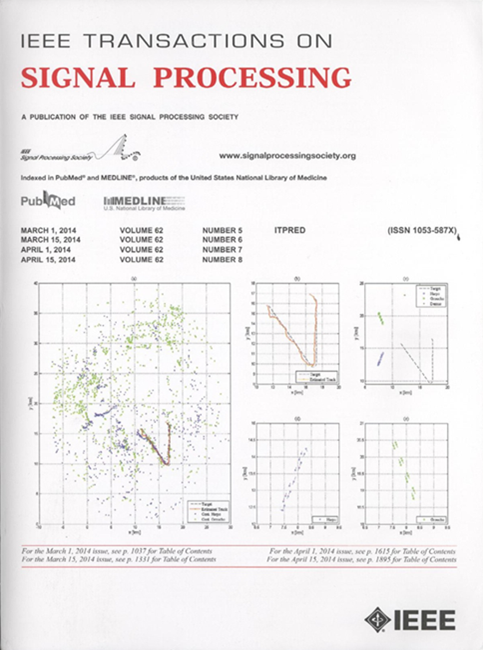HKF:分层卡尔曼滤波与在线学习进化先验用于自适应心电图去噪
IF 4.6
2区 工程技术
Q1 ENGINEERING, ELECTRICAL & ELECTRONIC
引用次数: 0
摘要
心电图(ECG)信号在许多医疗保健应用中发挥着关键作用,尤其是在家庭生命体征监测中。这些应用通常依赖的可穿戴技术经常会产生低质量的心电图信号。虽然有几种心电图去噪方法可以提高信号质量并帮助临床解读,但由于对噪声的容忍度有限或捕捉心电图动态的灵活性不足,这些方法在处理来自可穿戴技术的心电图数据时往往表现不佳。本文介绍的 HKF 是一种分层自适应卡尔曼滤波器,它采用专有的状态空间模型,能有效捕捉心电图信号去噪的心搏内和心搏间动态。HKF 以在线方式学习患者特定的心电信号搏动内动态结构先验,从而产生一个适应每位患者特定心电信号特征的滤波器。在一项实证研究中,香港滤波器在保留波形独特特性的同时,表现出卓越的去噪性能(降低了均方误差)。在对比分析中,HKF 的性能优于之前提出的心电图去噪方法,如基于模型的卡尔曼滤波器和数据驱动的自动编码器。因此,它适合应用于校外医疗机构。本文章由计算机程序翻译,如有差异,请以英文原文为准。
HKF: Hierarchical Kalman Filtering With Online Learned Evolution Priors for Adaptive ECG Denoising
Electrocardiography (ECG) signals play a pivotal role in many healthcare applications, especially in at-home monitoring of vital signs. Wearable technologies, which these applications often depend upon, frequently produce low-quality ECG signals. While several methods exist for ECG denoising to enhance signal quality and aid clinical interpretation, they often underperform with ECG data from wearable technology due to limited noise tolerance or inadequate flexibility in capturing ECG dynamics. This paper introduces HKF, a hierarchical and adaptive Kalman filter, which uses a proprietary state space model to effectively capture both intra- and inter-heartbeat dynamics for ECG signal denoising. HKF learns a patient-specific structured prior for the ECG signal's intra-heartbeat dynamics in an online manner, resulting in a filter that adapts to the specific ECG signal characteristics of each patient. In an empirical study, HKF demonstrated superior denoising performance (reduced Mean-Squared Error) while preserving the unique properties of the waveform. In a comparative analysis, HKF outperformed previously proposed methods for ECG denoising, such as the model-based Kalman filter and data-driven autoencoders. This makes it a suitable candidate for applications in extramural healthcare settings.
求助全文
通过发布文献求助,成功后即可免费获取论文全文。
去求助
来源期刊

IEEE Transactions on Signal Processing
工程技术-工程:电子与电气
CiteScore
11.20
自引率
9.30%
发文量
310
审稿时长
3.0 months
期刊介绍:
The IEEE Transactions on Signal Processing covers novel theory, algorithms, performance analyses and applications of techniques for the processing, understanding, learning, retrieval, mining, and extraction of information from signals. The term “signal” includes, among others, audio, video, speech, image, communication, geophysical, sonar, radar, medical and musical signals. Examples of topics of interest include, but are not limited to, information processing and the theory and application of filtering, coding, transmitting, estimating, detecting, analyzing, recognizing, synthesizing, recording, and reproducing signals.
 求助内容:
求助内容: 应助结果提醒方式:
应助结果提醒方式:


